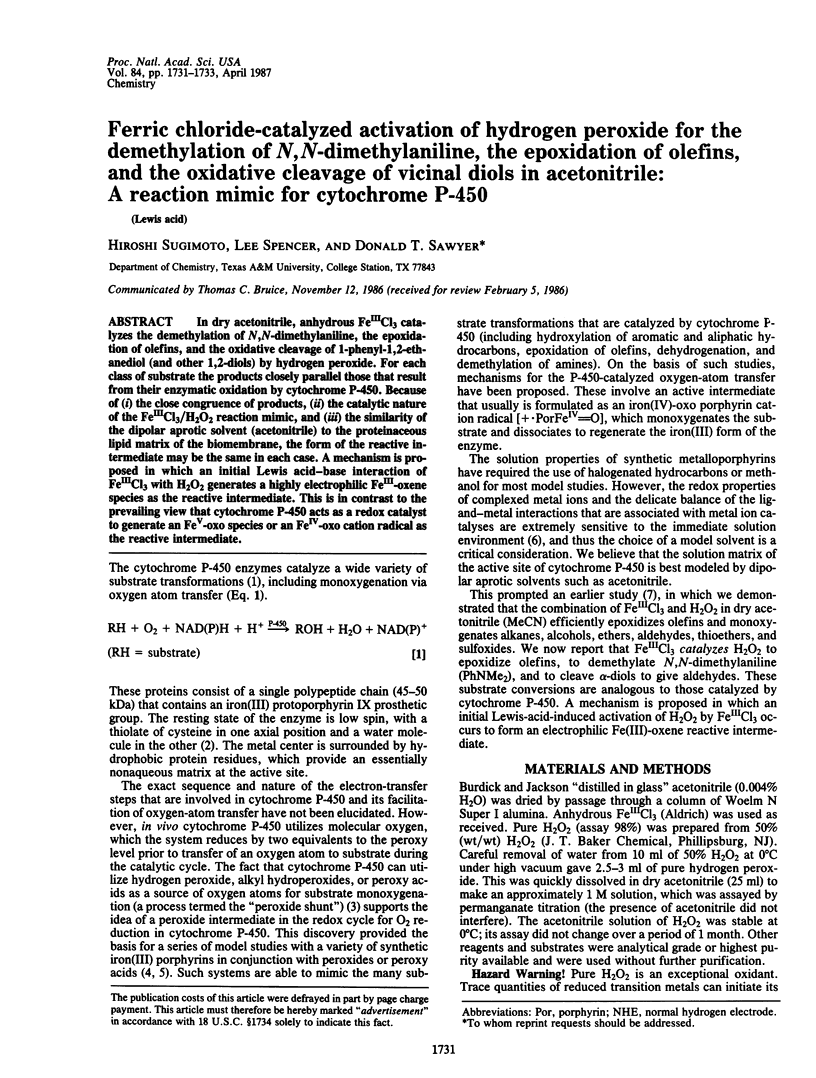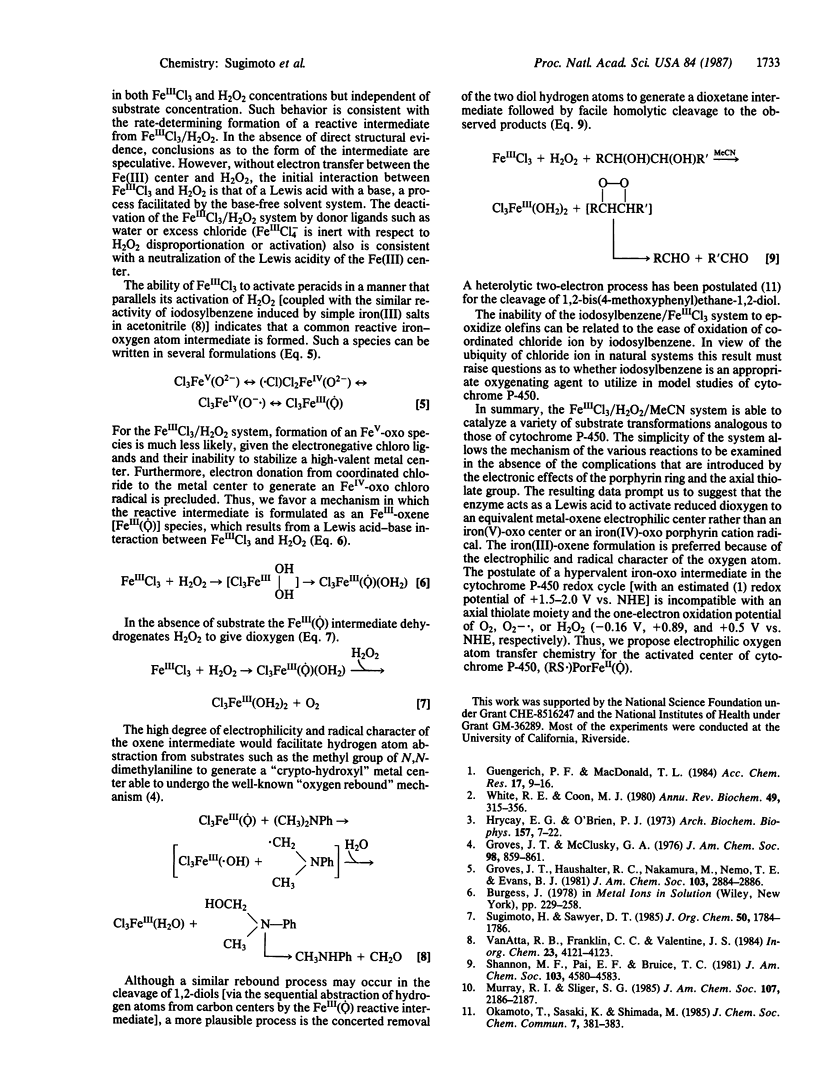Abstract
In dry acetonitrile, anhydrous Fe(III)Cl3 catalyzes the demethylation of N,N-dimethylaniline, the epoxidation of olefins, and the oxidative cleavage of 1-phenyl-1,2-ethanediol (and other 1,2-diols) by hydrogen peroxide. For each class of substrate the products closely parallel those that result from their enzymatic oxidation by cytochrome P-450. Because of the close congruence of products, the catalytic nature of the Fe(III)Cl3/H2O2 reaction mimic, and the similarity of the dipolar aprotic solvent (acetonitrile) to the proteinaceous lipid matrix of the biomembrane, the form of the reactive intermediate may be the same in each case. A mechanism is proposed in which an initial Lewis acid-base interaction of Fe(III)Cl3 with H2O2 generates a highly electrophilic Fe(III)-oxene species as the reactive intermediate. This is in contrast to the prevailing view that cytochrome P-450 acts as a redox catalyst to generate an Fe(V)-oxo species or an Fe(IV)-oxo cation radical as the reactive intermediate.
Full text
PDF


Selected References
These references are in PubMed. This may not be the complete list of references from this article.
- Hrycay E. G., O'Brien P. J. Microsomal electron transport. I. Reduced nicotinamide adenine dinucleotide phosphate-cytochrome c reductase and cytochrome P-450 as electron carriers in microsomal NADPH-peroxidase activity. Arch Biochem Biophys. 1973 Jul;157(1):7–22. doi: 10.1016/0003-9861(73)90383-4. [DOI] [PubMed] [Google Scholar]
- White R. E., Coon M. J. Oxygen activation by cytochrome P-450. Annu Rev Biochem. 1980;49:315–356. doi: 10.1146/annurev.bi.49.070180.001531. [DOI] [PubMed] [Google Scholar]


